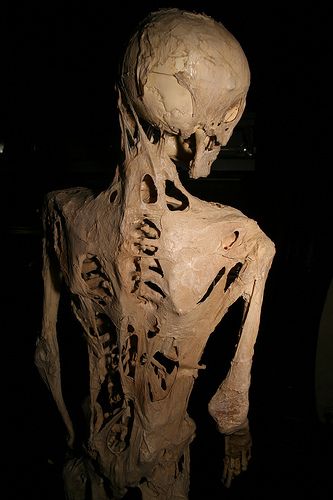Fibrodysplasia Ossificans Progressiva

Fibrodysplasia ossificans progressiva (FOP) is a severely disabling heritable disorder of connective tissue characterized by congenital malformations of the great toes and progressive heterotopic ossification that forms qualitatively normal bone in characteristic extraskeletal sites.
Epidemiology
The worldwide prevalence is approximately 1/2,000,000. There is no ethnic, racial, gender, or geographic predilection to FOP.
Clinical description
Children who have FOP appear normal at birth except for congenital malformations of the great toes (hallux valgus, malformed first metatarsal, and/or monophalangism). During the first decade of life, sporadic episodes of painful soft tissue swellings (flare-ups) occur which are often precipitated by soft tissue injury, intramuscular injections, viral infection, muscular stretching, falls or fatigue. If diagnosis of FOP is suspected, any invasive intervention (such as biopsy), which may lead to flare-ups, is contraindicated. These flare-ups transform skeletal muscles, tendons, ligaments, fascia, and aponeuroses into heterotopic bone, rendering movement impossible. Patients with atypical forms of FOP have been described. They either present with the classic features of FOP plus one or more atypical features (e.g. intercurrent aplastic anemia, craniopharyngioma, childhood glaucoma or growth retardation) (FOP plus), or present major variations in one or both of the two classic defining features of FOP (e.g., normal great toes or severe reduction deficits of digits) (FOP variants).
Etiology
Classic FOP is caused by a recurrent activating mutation (617G>A; R206H) in the gene ACVR1 (ALK2) encoding Activin A receptor type I/Activin-like kinase 2, a bone morphogenetic protein (BMP) type I receptor. Atypical FOP patients also have heterozygous ACVR1 missense mutations in conserved amino acids.
Diagnostic methods
The diagnosis of FOP is made by clinical evaluation. Plain radiographs can substantiate more subtle great toe abnormalities and the presence of heterotopic ossification. Confirmatory genetic testing is available.
Differential diagnosis
Differential diagnosis includes progressive osseous heteroplasia, osteosarcoma, lymphedema, soft tissue sarcoma, desmoid tumors (see these terms), aggressive juvenile fibromatosis, and non-hereditary (acquired) heterotopic ossification.
Antenatal diagnosis
Prenatal testing is not yet routinely available.
Genetic counseling
Although most cases of FOP are sporadic (non-inherited mutations), a small number of inherited FOP cases show germline transmission with an autosomal dominant pattern.
Management and treatment
At present, there is no definitive treatment, but a brief 4-day course of high-dose corticosteroids, started within the first 24 hours of a flare-up, may help reduce the intense inflammation and tissue edema seen in the early stages of the disease. Preventative management is based on prophylactic measures against falls (e.g. improvement in household safety, use of protective headgear), respiratory decline (e.g., incentive spirometry), and viral infections.
Prognosis
The median lifespan is approximately 40 years of age. Most patients are wheelchair-bound by the end of the second decade of life and commonly die of complications of thoracic insufficiency syndrome.